The secret to the best tasting French fries, hashbrowns, roasted potatoes, homemade soap and more. Beef fat (also known as beef suet) is an underused, healthy fat for cooking that's easy to make at home.
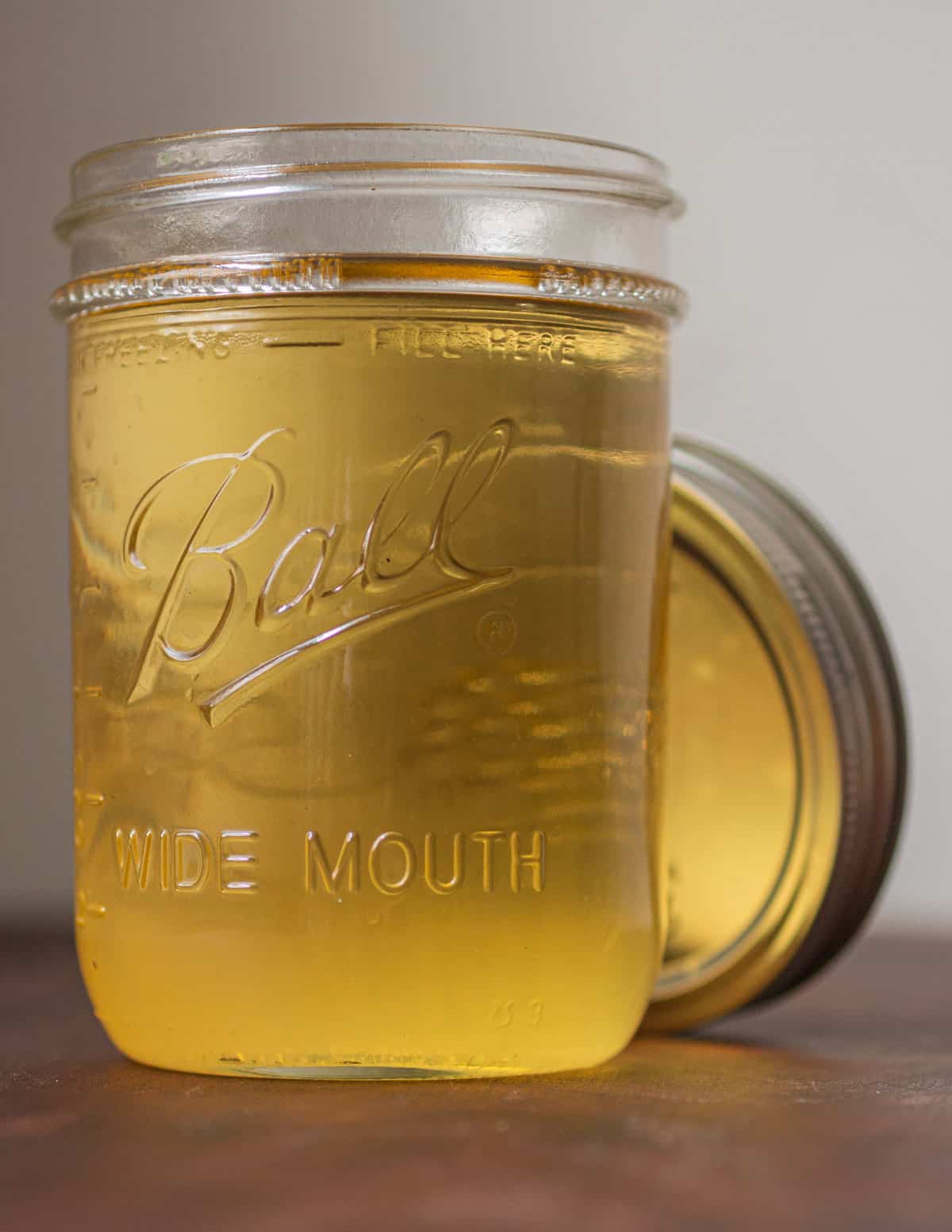
I've been making homemade tallow for over 20 years. Today I'll show you how to render fat from beef at home in an oven or a slow cooker. It'll give you perfect results, every time.
Chef's Tips
- Beef fat is highly perishable. The best thing to do is order it from a butcher, or purchase it frozen. Keep the fat frozen until the day you'll render the tallow.
- Smell your beef fat. It should smell clean and fresh, with a mellow beefy flavor. If you see white spots on it that is mold and the fat should be discarded as it won't taste good.
- A slow cooker is the best way to render tallow. Alternately, bake the fat and water in an oven-safe pot. Do not render tallow on the stove as it can burn easily.
- Store finished, rendered tallow in the freezer or fridge until you need it. Bring it to room temperature to make it easier to handle.
- Don't overcook the tallow. There's no need to cook the fat until it turns brown. Overcooked tallow tastes burnt and isn't good for cooking.
- Peferctly rendered tallow should be light yellow with a pleasant beefy smell. It should never orange or a darker color, which means it's burnt.

Tallow vs Lard
People often ask me what the difference is between tallow and lard. They're very similar in that they have a high smoke point comparable to vegetable oil, but there's a few important differences to understand.
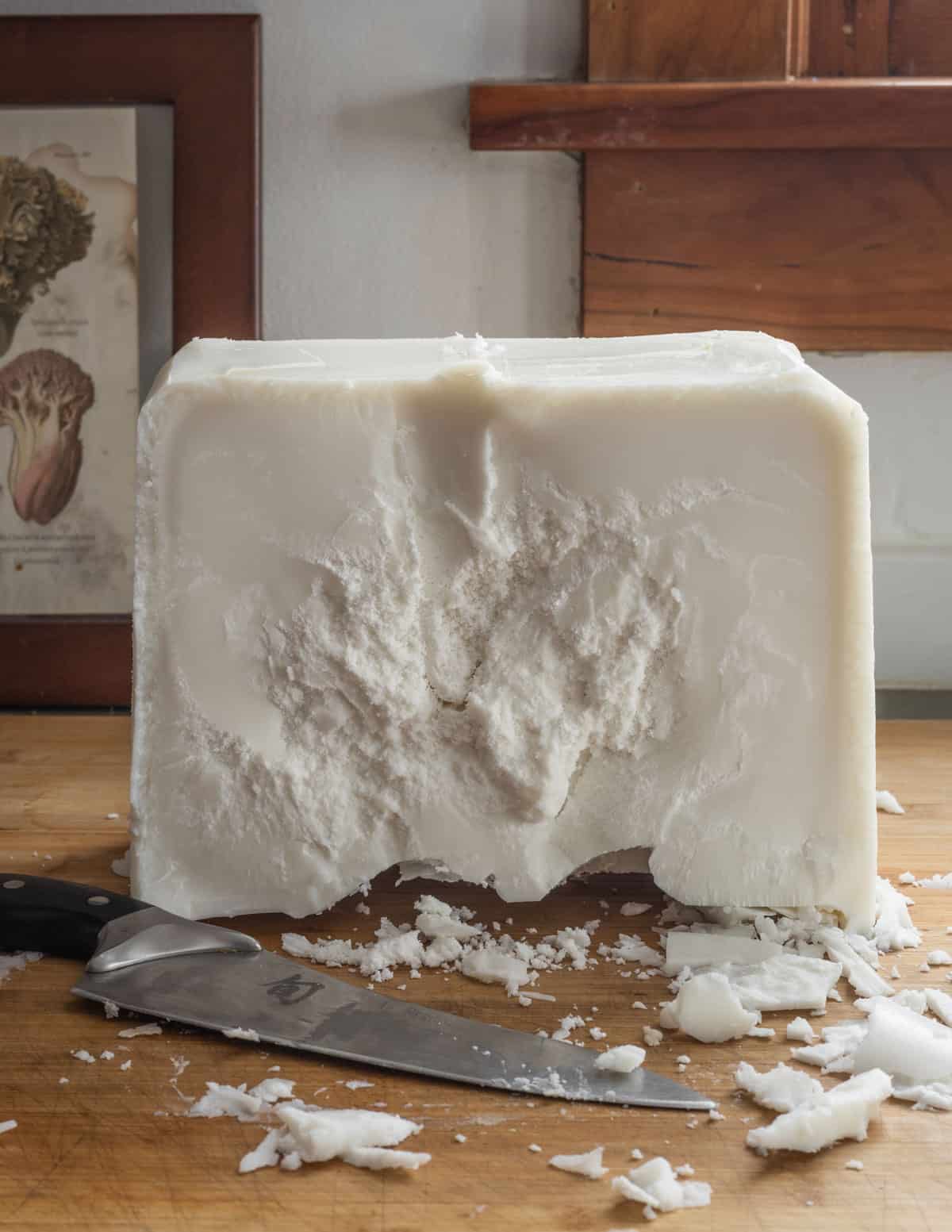
Tallow is the cooked, rendered fat of ruminants like beef, bison, goat, lamb or venison. Lard is rendered pork fat. All of the fats from ruminants have a very similar melting point and solidify quickly as the cool. Food made with tallow must be served hot to not have a sticky texture people compare to Chapstick.
Lard is always made from pork, it has a much lower melting point that ruminant fat like beef or goat. Even when refrigerated, it's spreadable and soft like butter. It's good for all purpose cooking and won't leave a sticky feeling in your mouth if it cools down.
How to Make Tallow from Beef Fat
It's easy to render beef tallow at home. First, you'll need some beef fat from a butcher or a local farm. You'll want at least 4-5 lbs of fat to make a small batch. The images below describe the process.
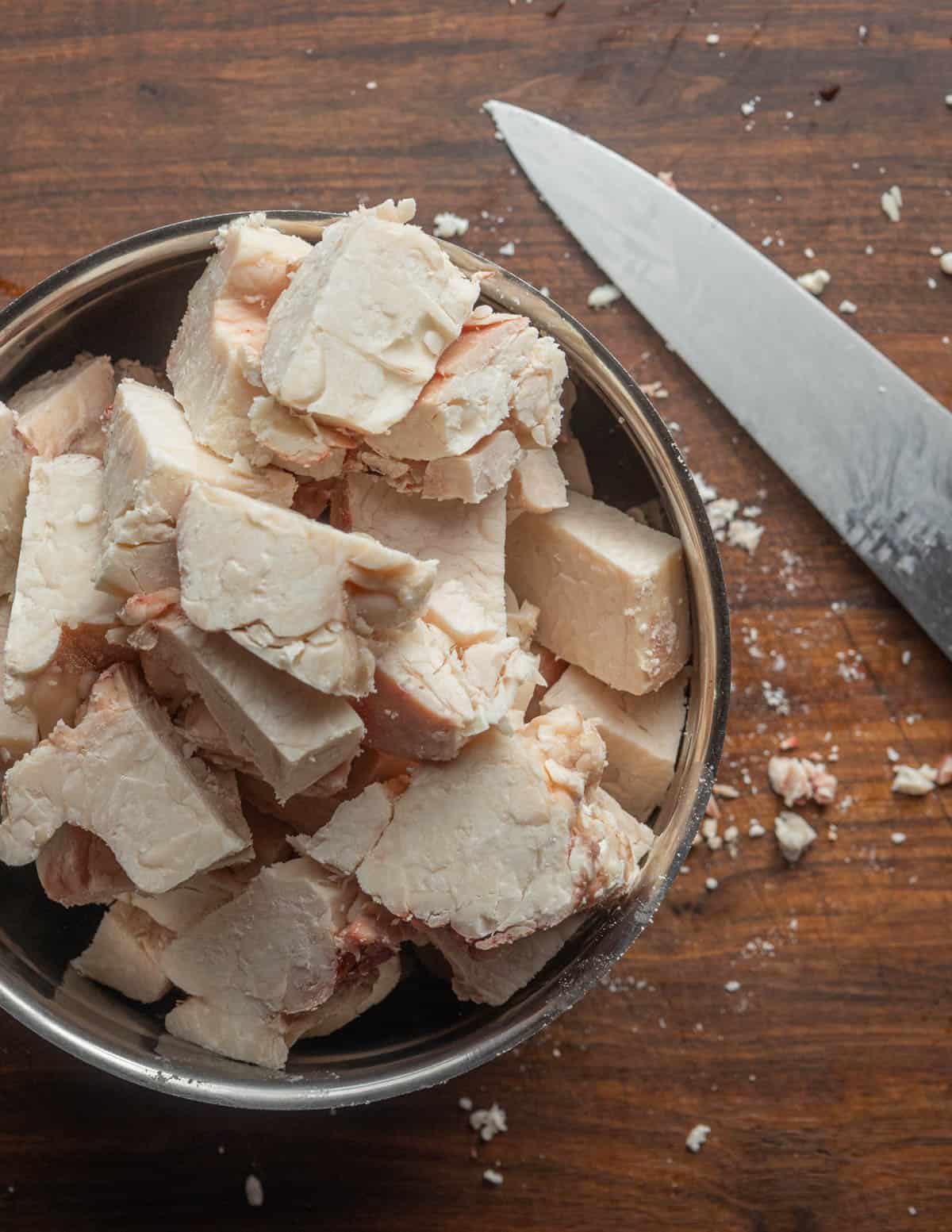
First the fat is cut into small pieces. The smaller the fat is cut, the faster it will render, and the better it will be.
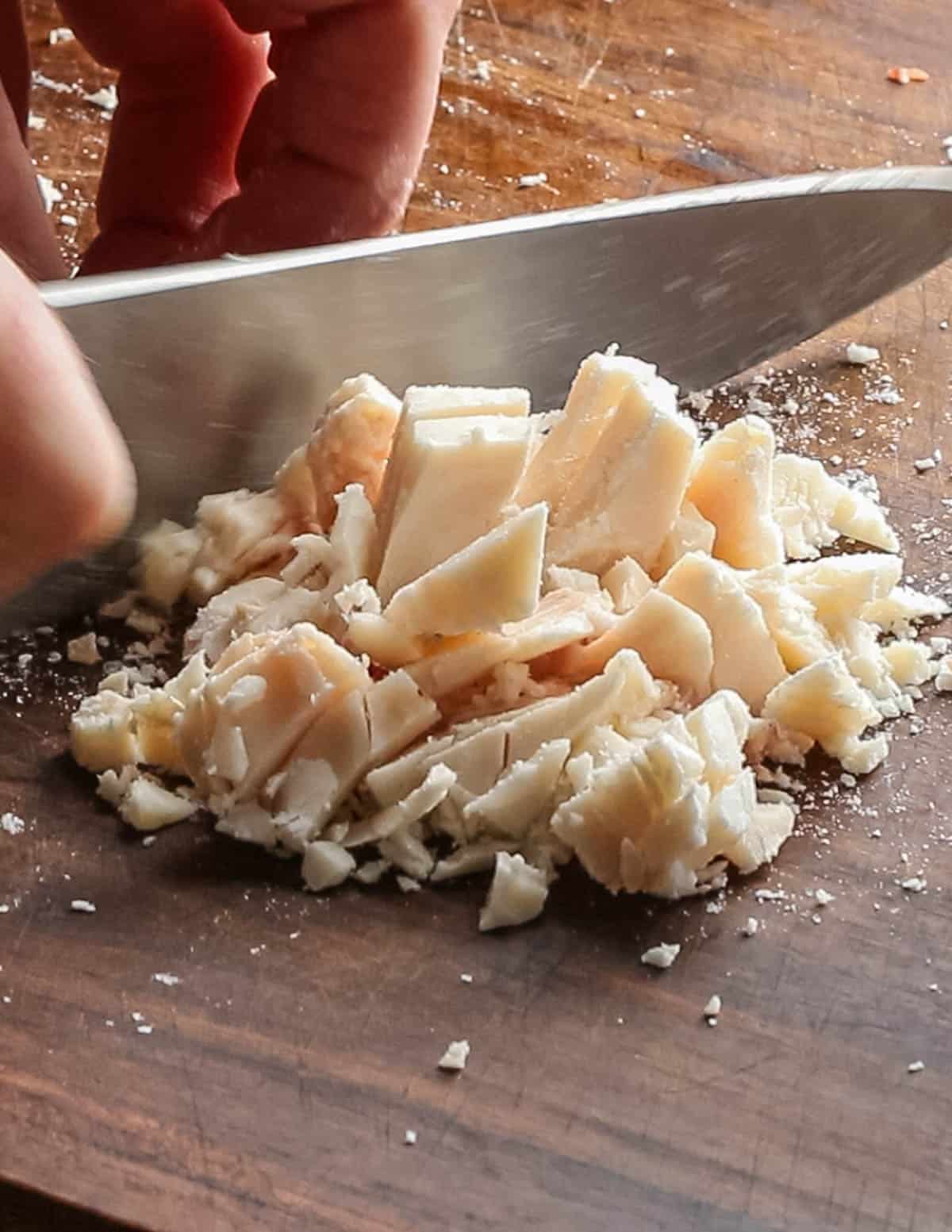
While I do grind half-frozen beef fat when I render 100 lbs or more at a time, it's best to cut it by hand at home since using a meat grinder requires some experience.
Also, beef fat sticks to things and is a pain to clean. A great chef tip is to use a bench scraper to clean beef fat from your cutting board.
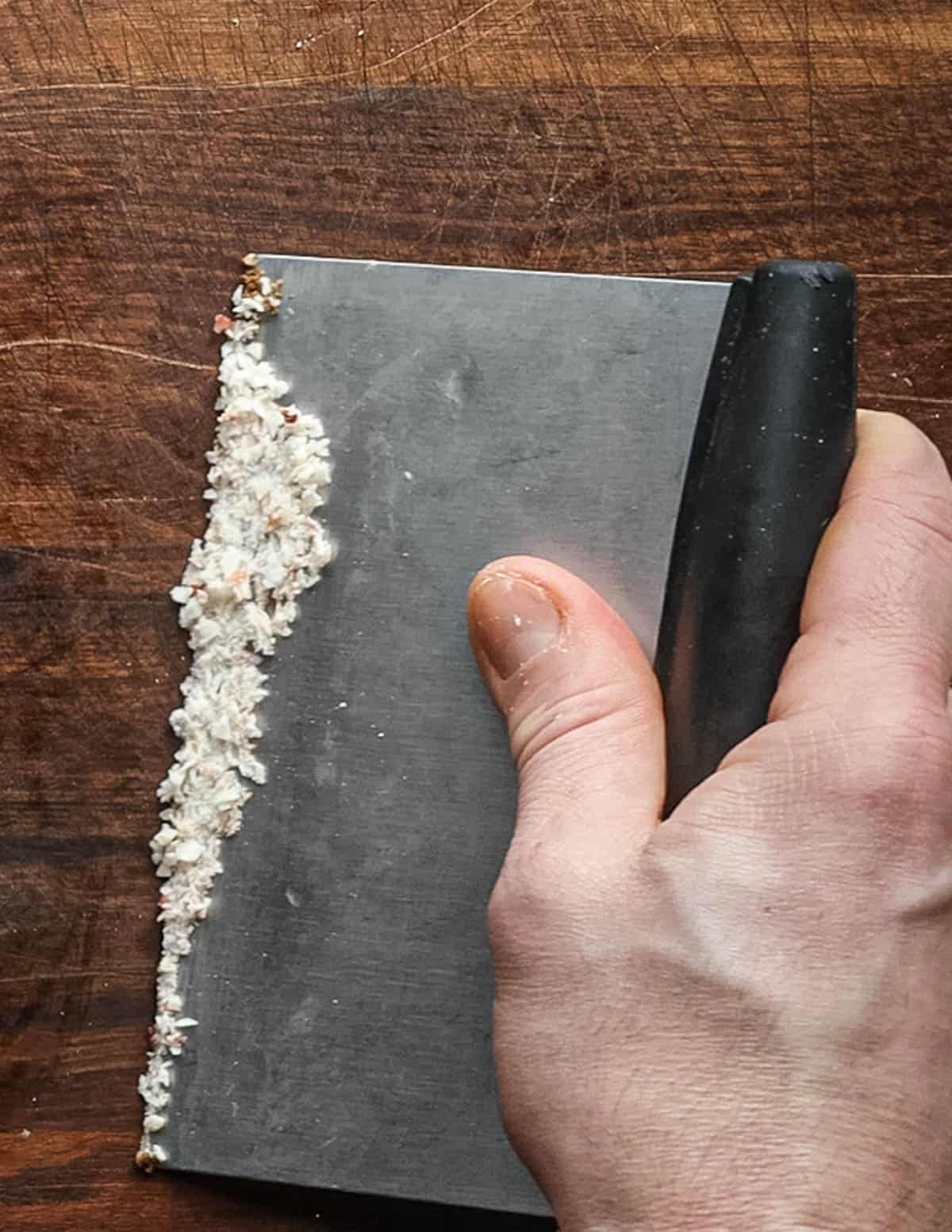
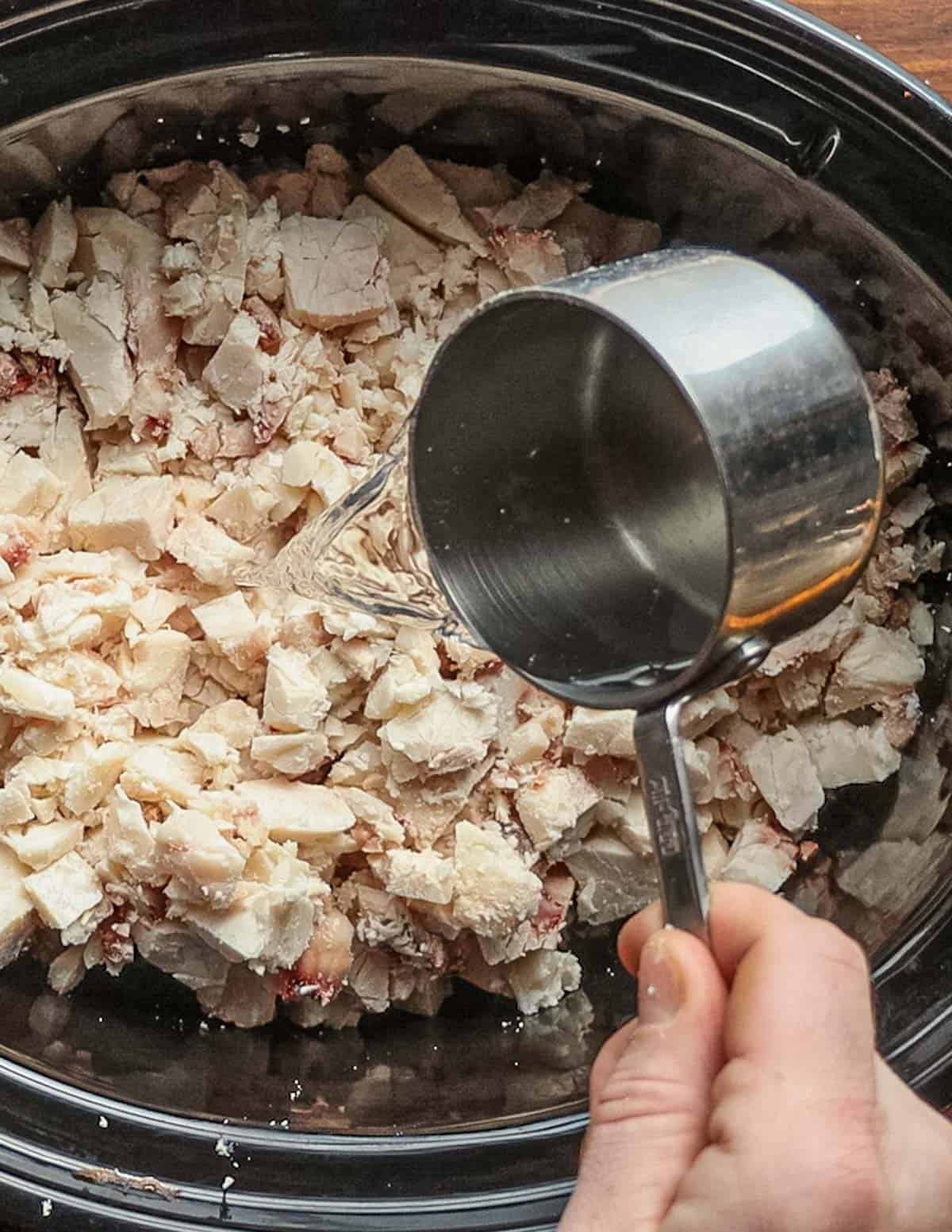
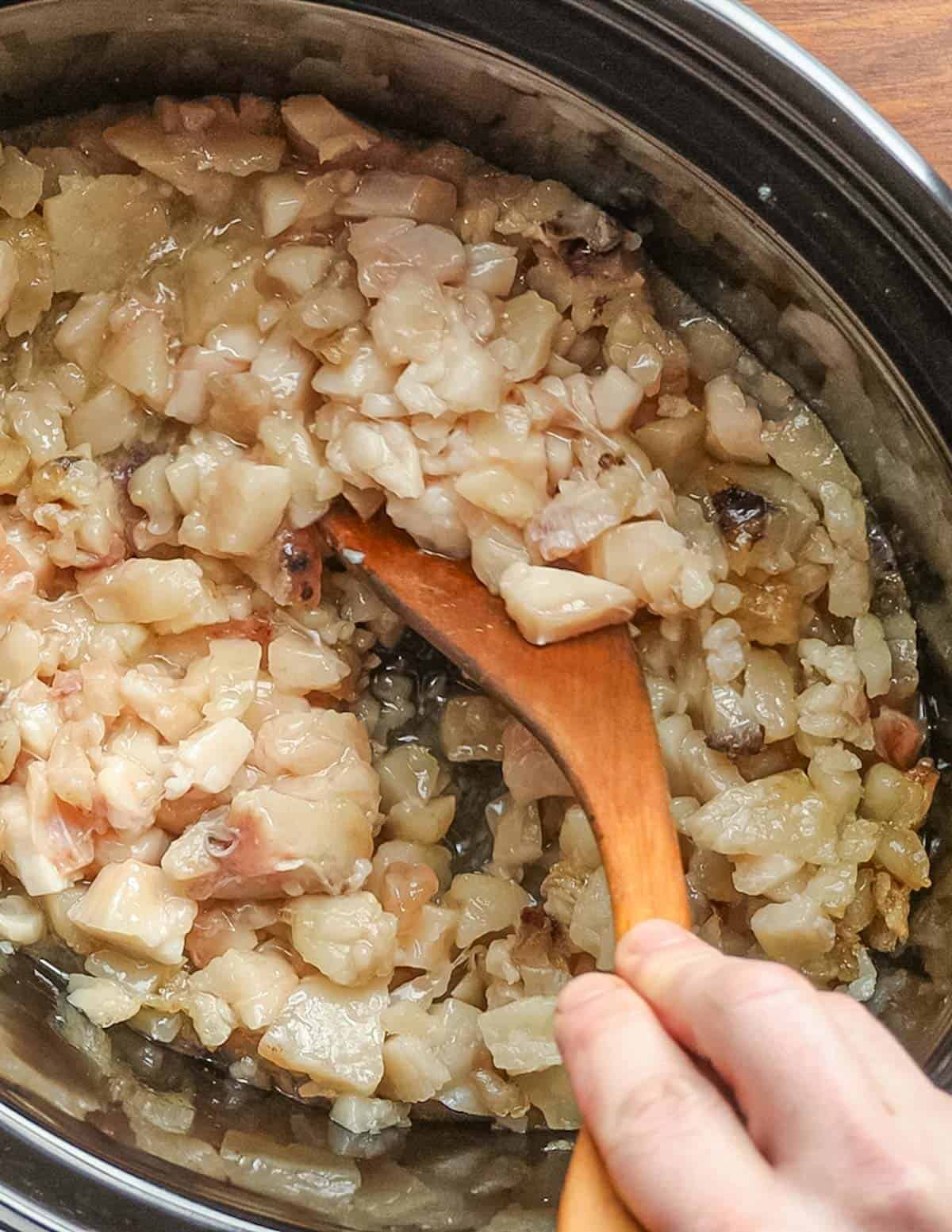
To speed up the process, you can pulse the warm fat with an immersion blender. This speeds up the process dramatically and increases the amount of tallow you'll make.
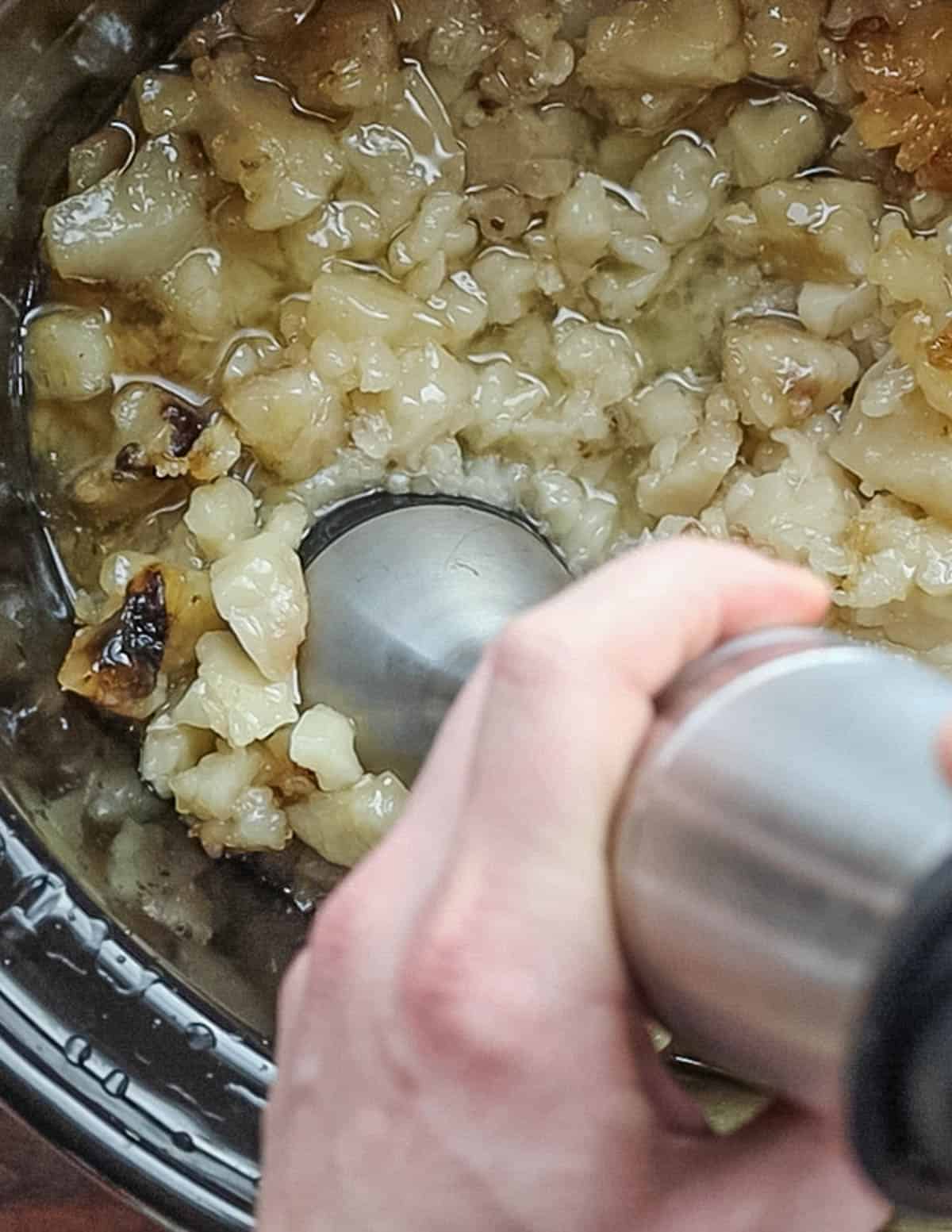
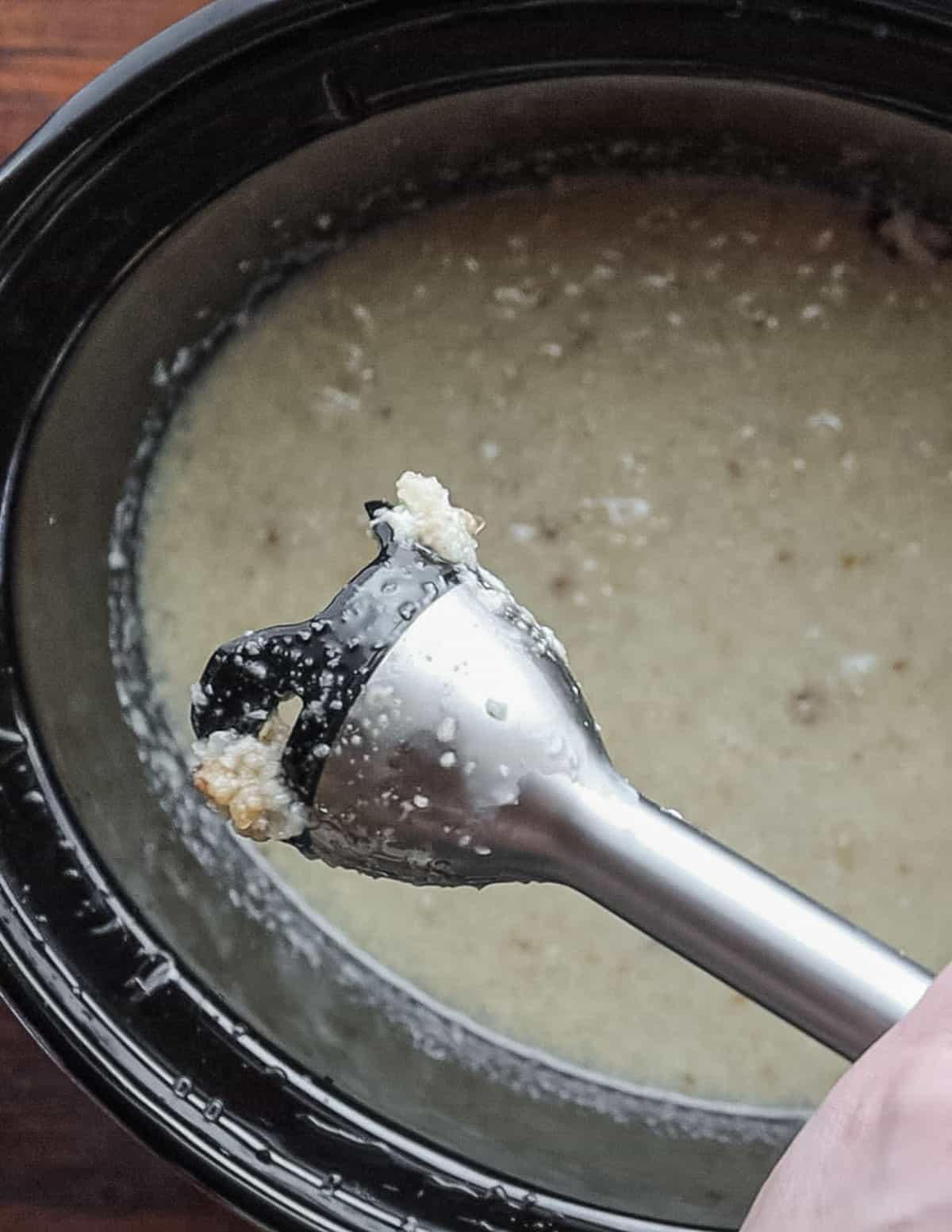
After a few hours the liquid will become clear and you'll see small bubbles appear on the surface.
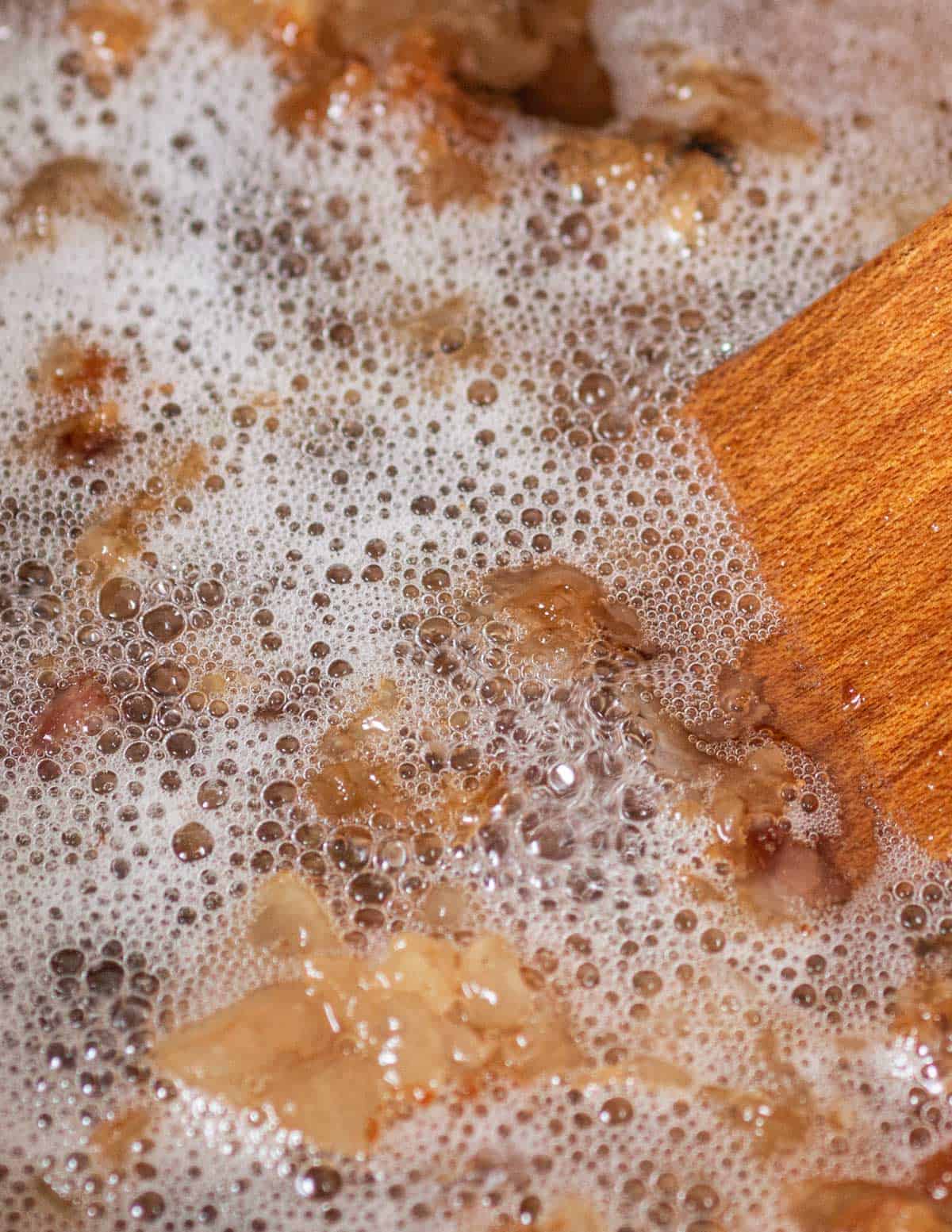
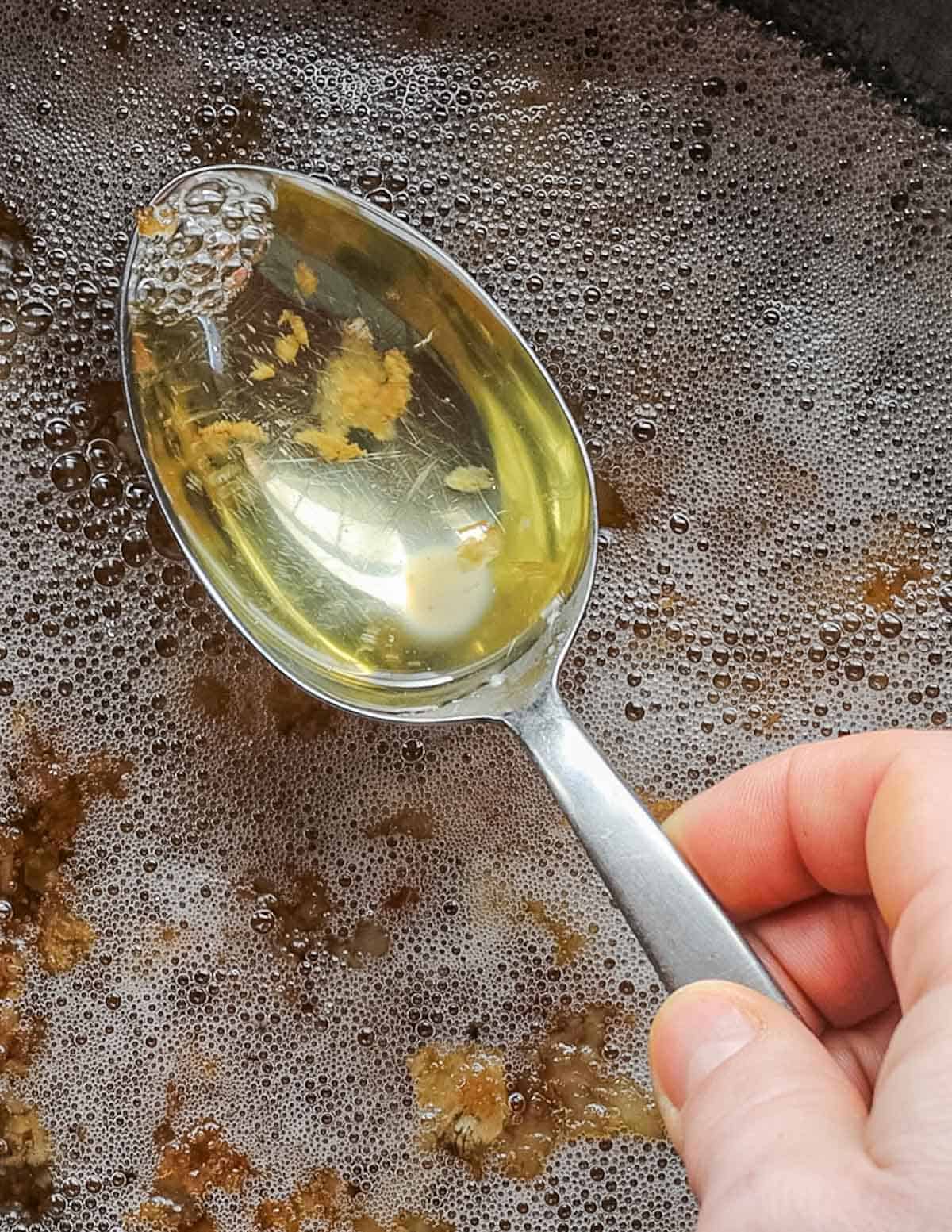
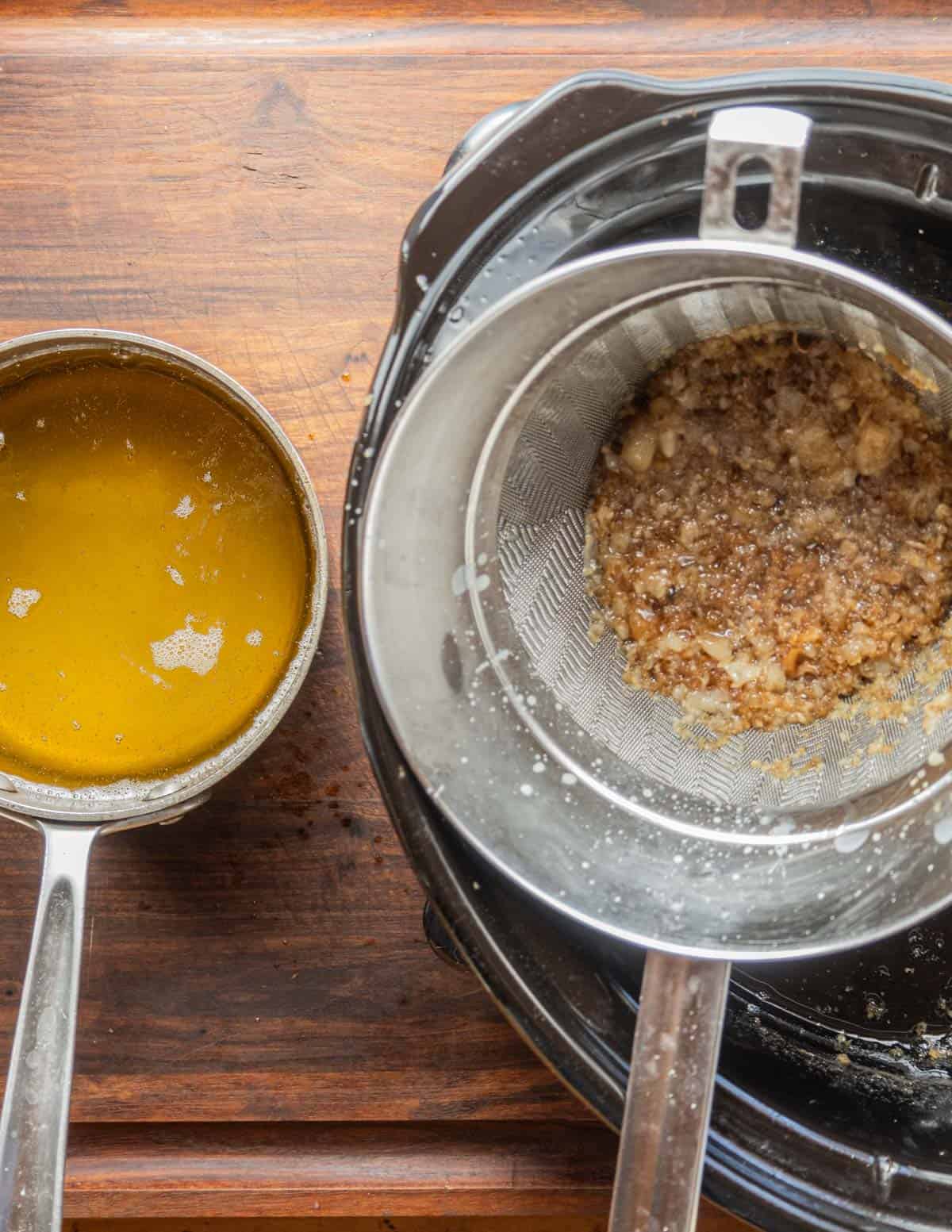
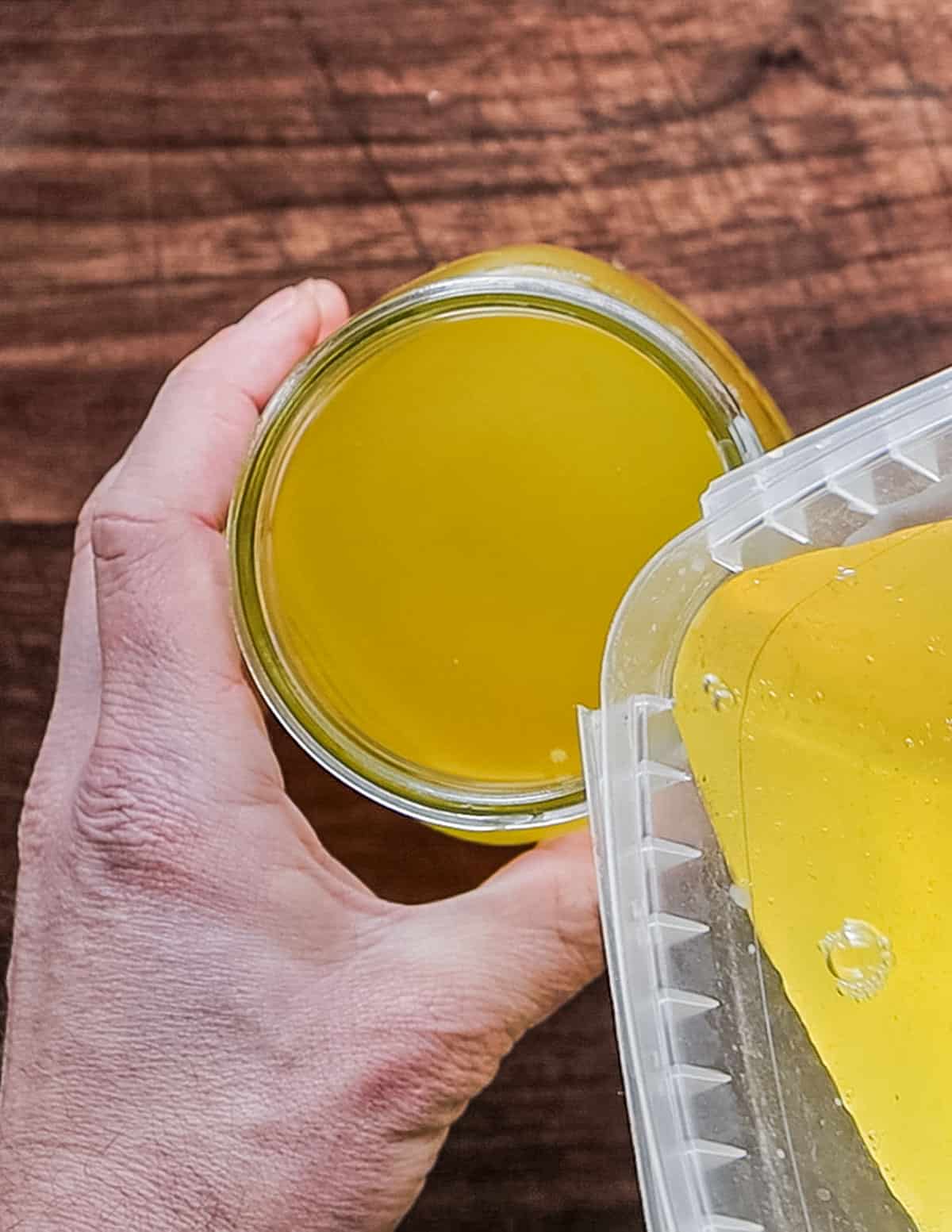
Strain the tallow in a container and portion into room temperature glass jars and freeze or refrigerate until needed. Feed the cooked pieces of beef fat to your friends chickens or discard it.

Making Beef Tallow in the Oven
You can also make beef tallow in the oven. To do that you'll need a heavy bottomed pot or a Dutch oven. Follow the directions for cutting up the beef fat above, then bake it in a slow oven (325F) for 3-4 hours or until the fat is clear.

How to Use Beef Tallow
Beef tallow is a great animal fat for cooking. As long as it isn't overcooked, it has a high smoke point that's great for deep frying and sautéing meat or vegetables over high heat. Here's a few of my favorite things to make with it.
Pan Roasted Potatoes
The best roasted potatoes you'll ever have are made with tallow.

Hashbrowns
Hashbrowns are also the perfect place to use any animal fat.

French Fries
French fries cooked in beef fat are a luxury. I used to make them every day at my first restaurant, the Salt Cellar.
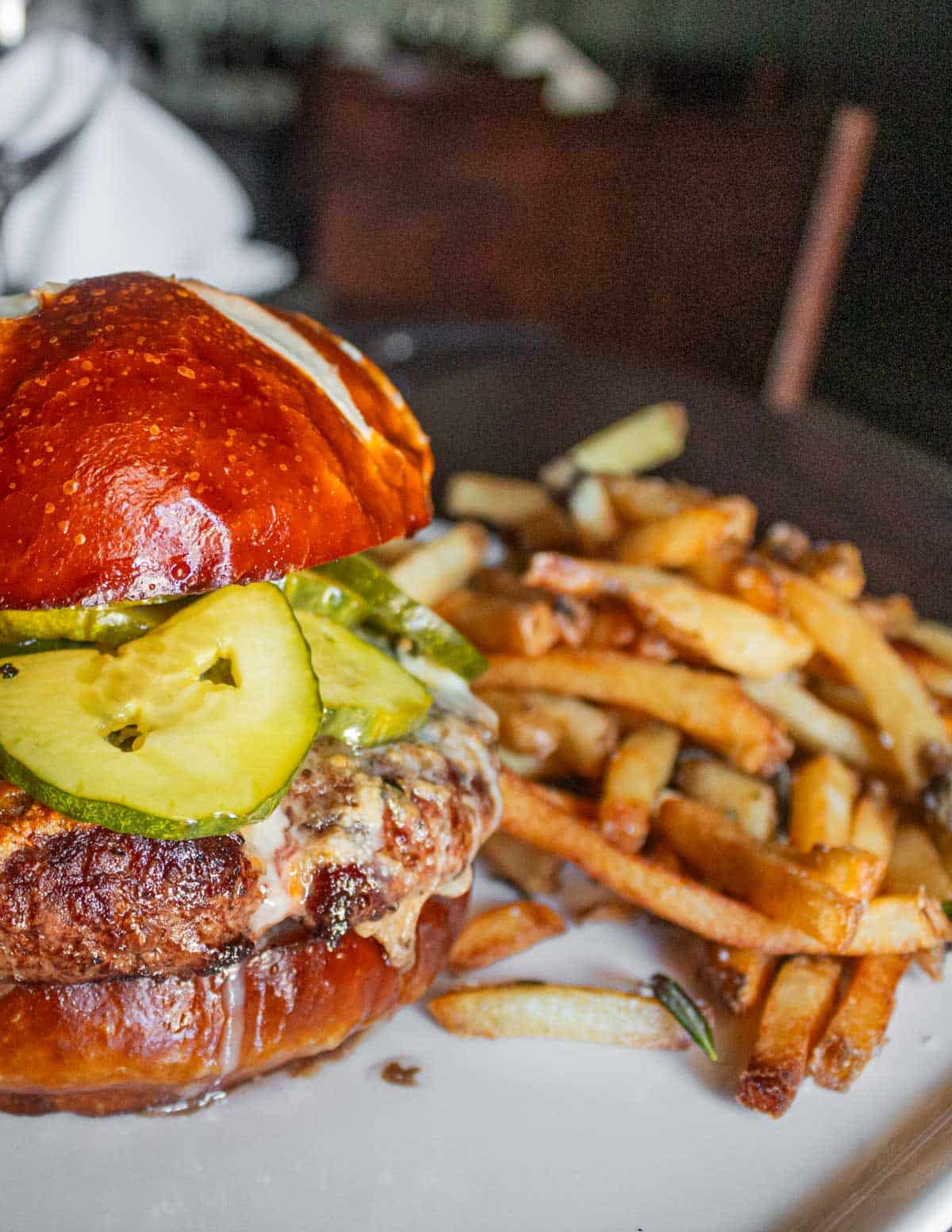
Related Posts
How to Make Beef Tallow at Home in a Slow Cooker
Equipment
- 1 immersion blender or hand blender optional but recommended
- 1 Slow cooker
Ingredients
- 5 lbs beef fat (beef suet)
- 1 cup water
- 1 fine mesh strainer
Instructions
- Allow the fat to thaw for 30 minutes if it's frozen. Cut the beef fat into 1 inch pieces using a chefs knife.
- Combine the beef fat and water in a slow cooker, put on the lid and cook on high heat. Lots of aroma will come from the crock pot, so consider doing it outside or in a garage.
- After 30-60 minutes the fat should be warm enough to puree. The smaller you cut up the fat, the faster it will soften. Pulse or puree it with a handblender. This step is optional, but will increase the amount of tallow the fat makes, as well as decrease the cooking time.
- The tradeoff is that some fibers will wrap around the blade of the hand blender, it's putsy to clean, but toothpicks or a thin garden snips work for me. Your choice.
- Stir the fat while it cooks occasionally, making sure it isn't sticking in the edges of the pot.
- After the halfway point (2.5 hours) inspect the fat. It should be at a steady bubble. Continue stirring occasionally to make sure it isn't sticking. If the fat sticks, turn the heat down to low.
- Once the fat turns clear and small bubbles appear on the surface (right around 5 hours for me) it's done. Strain the fat through a fine mesh strainer. Some people use a coffee filter but it takes forever and I don't recommend that. Cheesecloth works well in a pinch.
- Store the fat in mason jars in the fridge or freezer. It will last months in the fridge, and years in the freezer.
- Bring it to room temperature before cooking with it to make handling easier.


Marley
A tip I read recently for the 'water left in the jar' issue is to pour the rendered fat into a jar, and store it upside down while it cools (obviously a jar with a good lid)... then the water is on top when the container is back up the right way and much easier to remove, without having to rework it or change containers... HTH
Alan Bergo
Great idea. Thanks for commenting.
tuffy
Oh and will I need to sterilize the mason jars the rendered fat goes into?
Thanx
tuffy
Thank you for this. Rendering is a bit scary for me!
So, 10 lbs of lamb fat:
No Slow Cooker available.
I put the chunks of fat in a big stew pot and added 4 cups of water (from the Shepherds song website).
I brought it to a bubble, then turned down to Low / #1 on electric stove.
Ruined my immersion blender as the tendons wrapped around the blade axle😣
So I quit blending it. it’s still quite chunky.
Questions:
Will it still render in bigger chunks?
Is it ok to leave it overnight on this low temp? (8 hours, barely bubbling)
Do I cover it?
(I’m afraid the water will not evaporate if I cover it?)
Thank you 🙏
Alan Bergo
Hi Tuffy, thanks for commenting.
First, your immersion blender isn't broken you just need to clean it. I use a small garden snips or a toothpick to release any fibers wrapped around the blade. I also mention that pureeing it is optional, but it definitely gets you more yield (I'm currently testing this recipe for my book and make it both ways with pork fat yesterday).
To answer your question, the fat will still render, but you'll want to keep it on low heat at a gentle bubble, and make sure to stir it occasionally. Electric stoves are prone to burning things so keep an eye on the bottom of the pan. You can also bake it, and it's even more efficient as the heat's coming from all around and not just focused on the bottom of the pan. If you're still having issues I'd transfer it to a pan and bake it at 300 F until the fat is clear. It's ok to leave it overnight on low. The water will evaporate, but it will take time. I'm here if you have any follow up questions, and yes I run the jars through the dishwasher or just fill them with boiling hot soapy water and clean them very well.
tuffy
Thank you 🙏
I did leave it slowly bubbling overnight and poured it into jars. In several hours it basically showed a bunch of broth /brown-green tinted liquid at bottom of the creamy colored fat (not purely white).
So I think despite the *surface* of the fat looking clear this morning, the water did not fully evaporate?
Should the fat look clear all the way to the bottom? Or is surface clarity correct?
Or perhaps there is some aspic gelatin there under the fat? (The fat had tendony meat pieces in it too). It’s difficult to get to.
The pot was COVERED with a lid.
Should I have left the pot uncovered so any added liquid evaporated?
Was 4 cups water too much for 9-10 pounds of fat?
Should I reheat this fat plus liquid on low, until this liquid goes away?
Thank you so much
I appreciate your help immensely as I try to get the art and science of this right… 😌
Alan Bergo
So what you can do is remove the fat from the jars and either reduce it all until the water's evaporated and the fat is clear. The only issue with that is you can run the risk of the fat scorching if you forget about it, but you'll also get a higher yield as there's likely some chunks that haven't rendered yet. Option 2, and my preference, would be to melt all the jars down in a pot together, then pour them into a metal mixing bowl. Allow the fat to chill and it will firm into a brick that you can easily remove. Scrape the bottom of the fat to remove any debris which could splatter when you heat it in a pan. The liquid should be discarded. Give yourself a little grace as this is a learned skill. Once you get it down you'll be a pro.
Hanna
This recipe is by far the easiest to understand, and I made perfect tallow in the slow cooker with it. I had to improvise since I don't have an immersion blender, so I stuck the bigger pieces into a small Ninja smoothie blender and gave them a couple of pulses and it worked perfectly. Thank you for publishing this recipe!
Alan Bergo
Thanks Hanna.
Joy Hammond
Hello! The instructions don't say anything about turning the crockpot down from high. Do you cook the whole time on high? I noticed a reply where you said, when in doubt, turn it down. Thanks for your help. It will be my first time rendering beef fat 😮
Alan Bergo
Hi Joy, I added another line in the instructions, I hope it reads clearly. 5 hours on high should be just about right, but you'll want to check on it at the halfway point-if it's vigorously bubbling turn it to low. Once it's clear-it's done.
Jeri Kastner
How long is it safe to keep a jar of tallow in the refrigerator? I guess the answer will determine what size jars I will put it in 😉
Alan Bergo
I usually do pint jars or quarts. It’ll last for a few months in the fridge no prob. You can freeze it too for longer storage.
Daniel
Great information and presentation.
Thank you
Daniel
Alan Bergo
Thanks Daniel.
Doreen Nacht
I'm really enjoying every article and thank you for your time! They are incredibly informative and easy to follow and give me great insights to many different techniques and cuts, etc. that I didn't know about before. The instructions are very clear. It's a pleasure when someone so gifted is willing to share their knowledge with those seeking to understand. So, thank you very much! I know you said the fat goes bad very quickly. After it is rendered, is that no longer the case? Also, does this substitute for anything (such as an ingredient to replace another, etc.) other than frying foods or is that it's sole purpose. Thanks very much!
Alan Bergo
Thanks Doreen.
So, with the shelf life, after the fat is rendered it will last a very long time in the fridge or it can be frozen. For general cooking I keep a jar at room temperature as it’s easier to portion. The reason fresh fat goes bad is because it contains water, just like meat.
As far as general cooking, beef tallow has a very high melting point, which means it’s rock hard when cold, meaning you want to eat it hot. This is why it’s used for fried foods. Pan roasted potatoes and searing steaks are great ways to use it. You just don’t want it to be cook when you eat it or it will be tacky.
Elaine
Thank you so much for an easy to use recipe and the reminder to store the fat in the freezer until rendered. How much did you get from your 5 pounds of suet? I am carnivore so this is my fat of choice.
Alan Bergo
Hi Elaine, if you look on the recipe card you'll see it makes about 8 cups.
Stacia
I'm planning on making tallow this week or next using the crockpot option. Does the water evaporate in the crockpot? Or do I need to do something prior to straining it? Thanks for the easy instructions. My grandmother had a "grease" jar in her kitchen which I'm convinced was her secret ingredient to her amazing cooking. Appreciate your help.
Alan Bergo
Hello Stacia. The water will evaporate. As I describe in this post once the fat becomes crystal clear you'll know the moisture is gone.
Glendoria
hi Allen, I was cooking beef tallow, but it had some lean meat on it. The tallow came out OK but I think with me having the lean beef on it it made like a jell at the bottomafter I refrigerated it, do I need to take all the lean beef off?
Alan Bergo
Hello. It’s fine to use meaty bone scraps to make tallow, and what you’re seeing is gel from the meats natural liquid which is high in collagen.
It is exactly the same process as when homemade chicken stock can (and should) gel in the fridge. What the is means for your rendered tallow is, most importantly, The tallow don’t burn-great! But, you do need to remove all of the gel, you can scrape it off with a spoon and discard it or add to a beef stew.
It’s important no liquid is in your tallow when you cook with it as it will splatter, so take a little extra fat off to be sure. After the gel is removed I melt the fat and put it into a fresh jar or other container.
Thanks so much for commenting-I’m going to make a batch of tallow to get some images of what you’re seeing.
Ivan
Hi Alan:
I read this article about a week ago, so I was well prepared when we butchered two fat steers this morning. I salvaged all the caul fat and kidney suet, packed it into plastic bags, and froze it immediately. In the past, when I rendered lard from my hogs, I pressure canned it in quart jars at 10 lbs. pressure for 90 minutes, and it was good for years without any refrigeration, except, of course, after I had opened each jar. My question to you is, does that apply to beef tallow also? Thanks for this article, and for your informative website.
Alan Bergo
Hey Ivan. I haven’t pressure canned tallow personally as I don’t pressure can. I have lot of friends who pressure can meat though, and that’s very similar here. The type of animal and differences in the melting points of their respective fats would not affect the shelf life after processing like that. Great way to save space.
Dan
My beef fat has been cooking for 1.5 hours and is bubbling already. Should I put my slow cooker on low?
Alan Bergo
Yes, when in doubt, turn the heat down.
Hannah
I wish I had found this article before I made tallow using another one! I really appreciate the tips and detailed directions. The recipe I used didn’t mention anything about overcooking the fat. I think I burned it and it’s affected the flavor. Is there any way to salvage that, or certain things to cook it in? Or should I just try to make candles or something with it?
Alan Bergo
Hi Hannah, I'm so glad it was helpful. Those kinds of things are exactly why I took the time to write this! As far as the fat, it depends on just how high the temperature got. I don't make candles or use fat for anything other than cooking, but I think that might work. There's one example I know of where fat is used after it's reached a higher temperature. In Mexican cuisine, it's actually traditional for the fat to reach 350 F while they're rendering it. This is pork fat, so slightly different from beef fat. The higher temp means a stronger flavor, so that type of rendered fat can only be used for savory dishes-never sweet ones. As far as telling if the fat is burned or not, try sauteing a cut up baked potato in the fat. If you like the flavor it could be salvageable, if you don't, chalk it up to a learning experience. One time I accidentally left the heat too high on a 100 lbs of fat in a pot. The pot was so charred and awful my dishwasher refused to clean it. 🙂